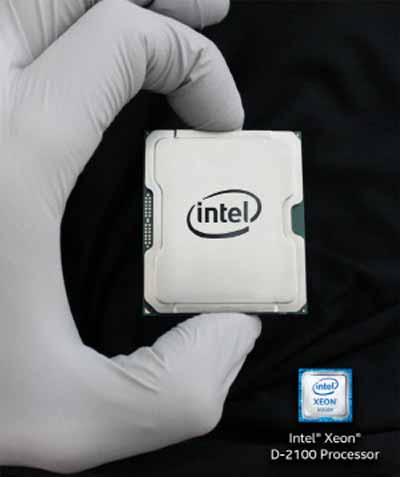Edge computingㆍNFV in optimization weapon …5G infrastructure by `Intel Insight`
Lee Gyung Tak | kt87@ | 2018-04-05 11:15:18

Intel is working on creating an "end-to-end" (E2E) infrastructure, including the AI, cloud and networking technologies that are implemented in the 5G environment. If 3G and 4G were just personal communication platforms, then 5G would need fundamental changes in computing infrastructure.
In particular, it is paying attention to edge computing technology that enabled 1,218 dron flight events that were introduced at the opening ceremony of PyeongChang Winter Olympics in February. Edge Computing is a technology that allows data from a large number of devices connected to the 5G to be analyzed directly from nearby base stations at the point where data is generated, rather than being sent to a centralized data center such as the cloud. It is suitable for small-scale local data processing, and devices can send and receive data at high speed. There are many advantages such as lowering the operation errors of machines and robots in the industrial field where Smart Factory is implemented.
The Xeon D-2100 processor (pictured), which Intel has recently released, enhances the performance and security of the network edge. It also enables carriers to provide optimized services in virtual private network (VPN) and cryptographic services environments. Storage, content delivery networks (CDNs), and enterprise networks, Intel said.
"In a 5G environment, service companies must optimize their data center and edge infrastructures to seamlessly connect and service end users and smart devices that require more bandwidth," said Sandra Rivera, senior vice president of Intel, the Xeon D-2100 processor Enabling businesses to implement efficient computing with minimal power consumption."
◇ Standardize with NFV to lower 5G service cost = Objects that implement VR content, autonomous vehicles, drone, UHD 4K broadcasting, etc. 10 times faster than existing 4G for stable and fast data transmission in Internet of Things (IoT) environment 5G network is essential.
However, running 5G services costs a lot. In addition, the mix of different network infrastructures also increases the complexity of the architecture and the probability of failure.
Intel is working with telecommunications service and network equipment companies to build an NFV ecosystem. NFV is a method of removing physical network equipment and mounting virtualized network functions on the server. In the past, telecom equipment and network equipment makers produced modems and processors that were not compatible enough to standardize on Intel Xeon processors.
Besides, `network slicing` technology can be used to split the network structure and support multiple network services simultaneously. Carriers can deploy virtualized basestations anywhere with a low-cost x86 server. Intel will launch its first commercial 5G modem `XMM8060` this year.
Sandra Rivera, senior vice president at Sandra Rivera, said, "If data travels on a single-lane expressway in the mobile network, data will need to move to warp speed and support multi-lane highways in the 5G network. We will provide a solution to make it possible."
By Lee Gyung Tak kt87@
